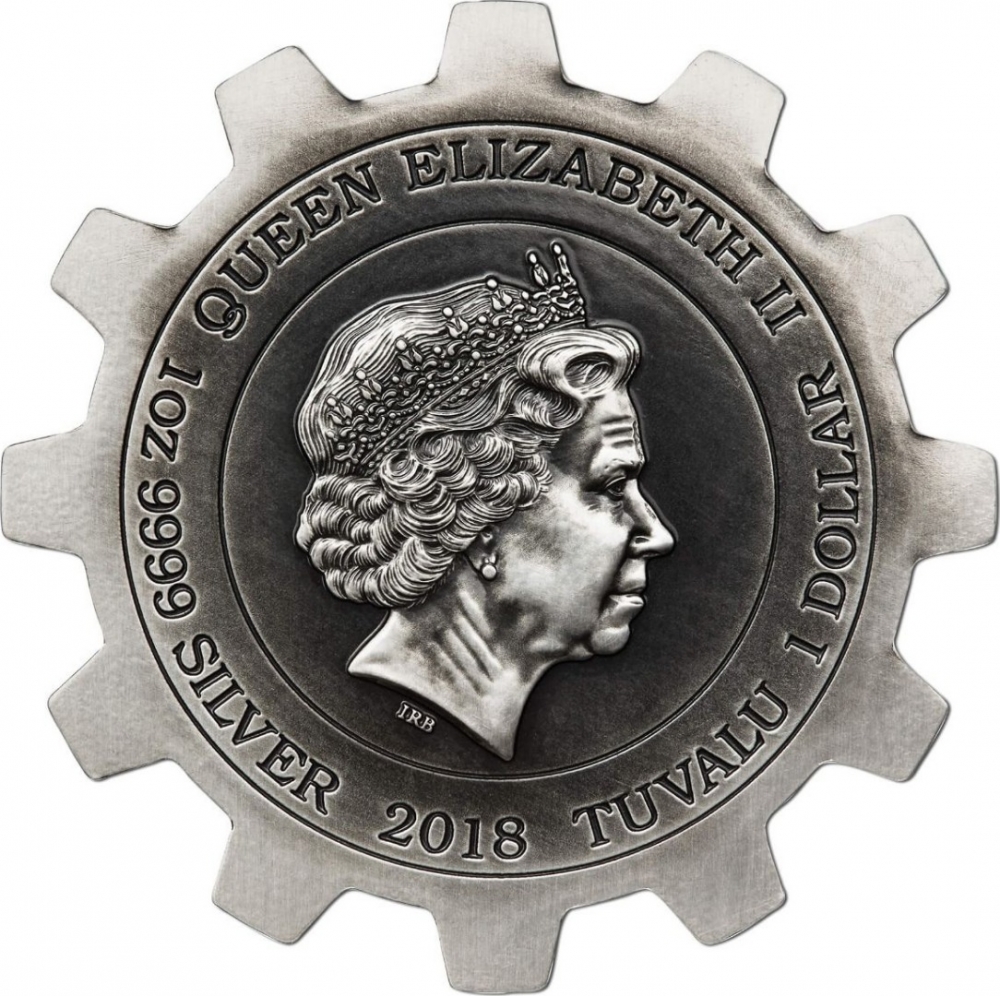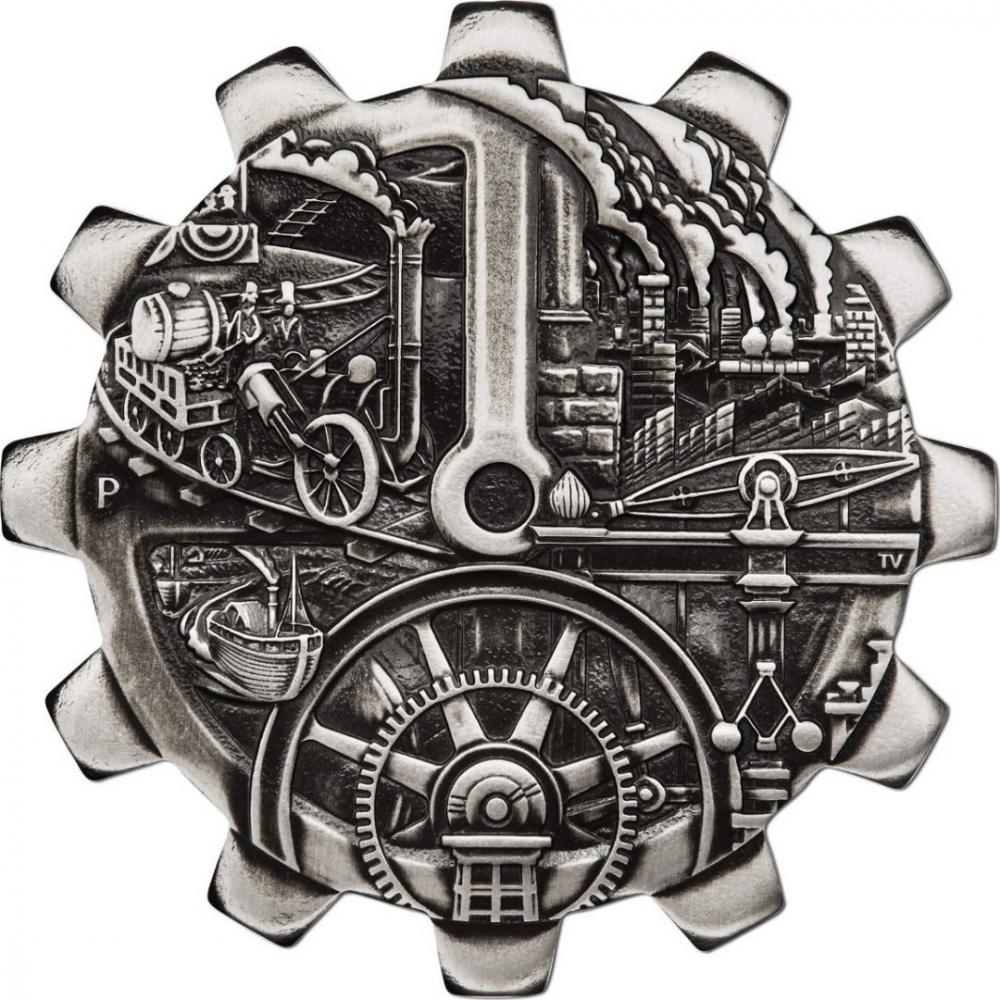You are about to finish your registration. Please check your mailbox (including spam folder). There should be a letter with a confirmation link. Check setting to make sure that your e-mail address is correct.
Send letter againDescription
The Perth Mint has released the innovative 1oz silver gear-shaped two-coin set, illustrating historic inventions using steam and electricity. Key developments in these areas spurred industrial and technological advances resulting in what we know today as the First and Second Industrial Revolutions.
The Industrial Revolution, which began more than 200 years ago, ushered in enormous changes to human society. Handcraft workers from rural communities moved to densely packed urban environments where they were employed for long hours in grimy factories dominated by noisy machinery. Driven by the invention of new technology and adoption of new processes, the industrial revolution had dramatic effects on economics, politics and culture.
Fundamental to mechanisation was the development of Boulton and Watt's steam engine. One of its first applications was pumping water from mineshafts at the growing number of collieries required to satisfy another key facilitator of industrialisation - coal.
Beginning around 1870, the Second Industrial Revolution, also known as the Technological Revolution, marked a new, even more rapid phase of industrialisation. It was characterised by many important inventions, notably in electricity which replaced steam as the main source of industrial power.
The Two-coin set is presented in an acrylic case with a mechanism to rotate the coins. The case sits within a themed shipper and is accompanied by a numbered Certificate of Authenticity.
Obverse

|
Fourth crowned portrait of HM Queen Elizabeth II facing right, wearing the Girls of Great Britain and Ireland tiara. QUEEN ELIZABETH II |
|---|---|
Reverse

|
Depicts a number of significant inventions that contributed to the First Industrial Revolution. Imagery represents an early steam locomotive and the railways; the chimneys of Britain's mills and early factories which used steam power for driving machinery on a large scale; a flywheel and other components symbolising elements of Boulton and Watt's steam engine; and an early steamboat similar to the type pioneered for use on the Forth and Clyde canal by William Syymington. P |
| Edge |
1 Dollar
4th portrait, Silver Gear-Shaped Coin
Evolution of Industry
Steam Power
Subscribe series
KM#
Evolution of Industry
Steam Power





